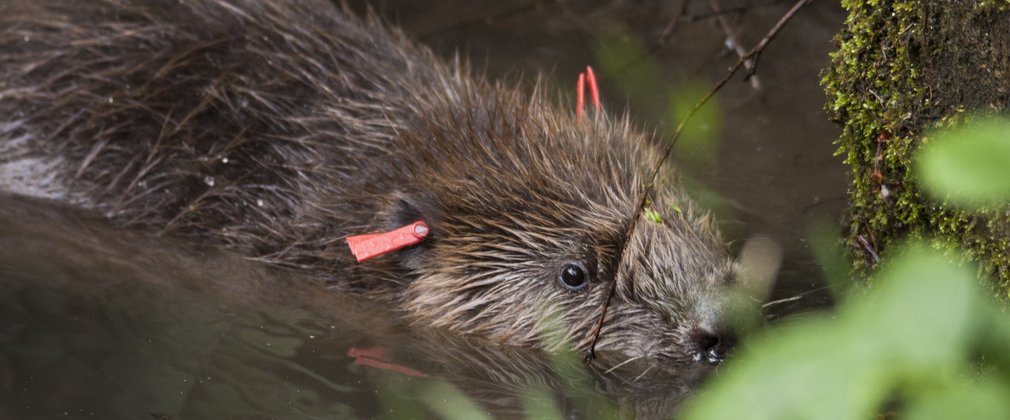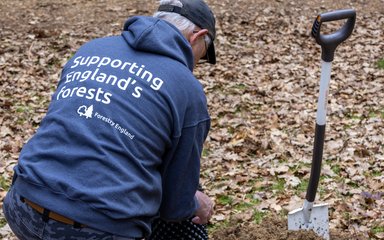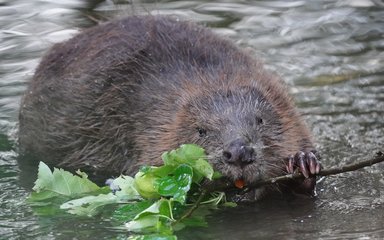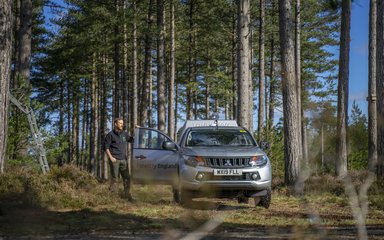Forest of Dean beaver project information
Beavers are 'ecosystem engineers'. Beaver dams can slow the flow of water at times of heavy rainfall, releasing it slowly during dry periods thereby reducing the ecological impacts of drought.
Here in the Forest of Dean, Forestry England are working together with experts at the Beaver Trust to introduce beavers within an enclosure. We'll them be able to monitor the changes that take place to the biodiversity, habitats, water quality and flow rates.
The data we gather will provide evidence to determine the impacts of beavers on the wider landscape.
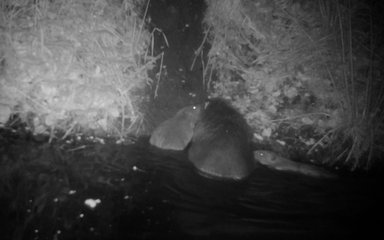
Beavers at Greathough
Two adult beavers from Bavaria were released into a 6 hectare enclosure at Greathough Brook in July 2018. These beavers were health checked and had a period of quarantine prior to release. However, due to certain disease and parasites being present in mainland Europe and not in the UK, these beavers were rehomed to a secure environment. Two beavers from Scotland arrived in the autumn of 2019.
Upon release the beavers began to cut down trees immediately to access food and to provide material to build dams and lodges.
Beaver kits
After the sad loss of the female beaver, a new partner was introduced to the male and two kits were born in April 2023. In 2024 another two kits were born.
We continue to monitor the family to ensure they remain healthy, and we are excited to see the increased positive environmental impact that the larger family will have.
Beavers at Perry Hay
Two adult beavers – one from Scotland and one from Devon – arrived at the Perry Hay enclosure in May 2024.
The male beaver was originally born at our Yorkshire enclosure in Pickering and joined his female friend at their new 12-hectare home near Spruce Ride, where they will build dams to help improve the wetland habitat.
Trail camera footage show the beavers are settling in well.
Where is the new enclosure?
From Spruce Ride car park, Perry Hay is 1.5km down Spruce Ride. From the top of Mallards Pike Lake, Perry Hay is just over a kilometre upstream.
Mallards Pike running routes (3km, 5km and 10km) pass along the fence line. The enclosure is just off the popular walking route of Spruce Ride and is near to the Colliers Trail.
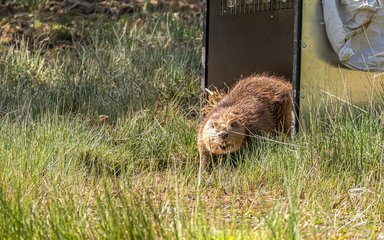
Forest of Dean beaver timeline
- 2018: first beavers are introduced into the Greathough enclosure.
- Autumn 2019: the new male and female beavers arrive.
- Summer 2022: sad loss of the female beaver.
- October 2022: a new female is introduced.
- January 2023: the Greathough Brook beaver licence was renewed for another five years.
- April 2023: two kits are born.
- Summer 2023: Forest of Dean granted new five-year project licence.
- January 2024: work begins to prepare new enclosure at Perry Hay.
- May 2024: two adult beavers are released at Perry Hay enclosure.
- April 2024: two kits are born
Can you spot the beavers?
The best time to spot the beavers is during the spring and summer months during early mornings or evenings when they emerge from their lodges or burrows. Winter is also a great time to see them while the leaves are off the trees. Visitors can also see what habitat changes the beavers have made on the forest.

